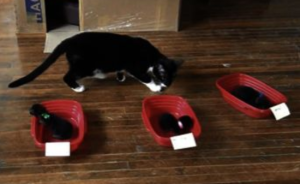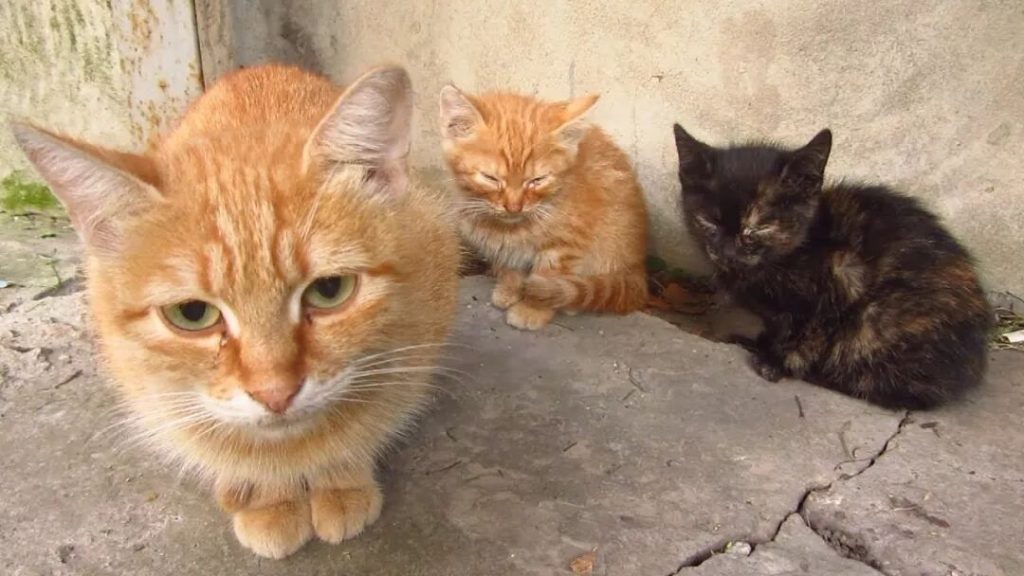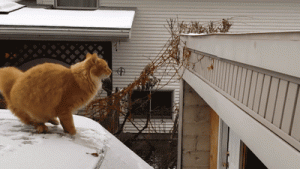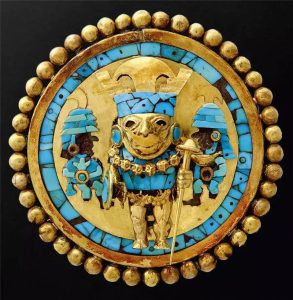As we all know, cats are solitary animals with a strong sense of territoriality. When another cat enters their domain, they often hiss, confront, or even fight. However, when a cat gives birth to kittens, they tend to follow the “communal care” approach: adult mother cats often cooperate to protect or nurse the young ones. But with so many “mischievous kittens” around, do mother cats treat them differently? Can they clearly identify which one is their own baby?
-
Do Mother Cats Treat Their Kittens Differently?
Caring for offspring is a demanding task for mammals, and in theory, mother cats should prioritize their own kittens. However, in 1987, biologists observed the behavior of cats living in groups and sharing the responsibility of caring for kittens. They found that the behavior of mother cats towards their own kittens was almost identical to how they treated other cats’ kittens. This led to a further question: Could it be that mother cats simply cannot tell their own babies apart?
-
Can Cats Tell Their Own Kittens Apart?
Researchers from the Mexican Biological Research Institute set out to test whether cats can distinguish their own kittens from others. In their experiment, they placed four kittens (two of the mother’s and two of other cats) in a plastic container about one meter from the entrance to the cat’s nest, with a 25 cm gap between each kitten. The researchers then measured how long the mother cat sniffed each kitten and the time and order in which she carried them back to the nest. The results: Out of the 12 mother cats tested, 7 brought back all of the kittens. Two brought back two kittens (one of their own and one from another cat), while three brought back none. Interestingly, the mother cats spent a little more time sniffing the foreign kittens, but their behavior toward both groups of kittens was almost identical. This suggests that while mother cats may not show a significant difference in how they treat their own kittens versus others, they can still recognize their babies.

-
Do Cats Use Their Sense of Smell to Tell Their Kittens Apart?
For many animals, such as bats, goats, sheep, pigs, dogs, and even humans, the sense of smell plays a vital role in recognizing offspring. So, does the same hold true for mother cats? In a “smelling experiment,” researchers wrapped three of the cat’s own kittens and one kitten from another cat in clean, odorless towels, leaving only their anal areas exposed for the mother cats to sniff. The results: The mother cats spent very little time sniffing their own kittens’ anal areas but spent much longer sniffing the foreign kitten’s anal area. This suggests that mother cats can distinguish their own kittens, most likely using their sense of smell.
-
Can Cats Rely Solely on Smell to Identify Their Kittens?
Since the second experiment didn’t completely rule out non-smell factors, the researchers conducted a third experiment to further investigate. In a purely olfactory test, researchers wiped sterile cotton swabs on different areas of the kittens (back, belly, armpits, anus, and cheeks) five times each, then sealed the swabs to preserve their scent for 10 minutes. The mother cats were then presented with the four swabs and their sniffing responses were observed. Of the four swabs, the first three were from the mother’s own kittens, and the fourth was from an outsider’s kitten. The results: The mother cats spent much less time sniffing the swabs from their own kittens, but spent much more time on the swab from the foreign kitten. This experiment confirmed that mother cats can identify their kittens purely through smell.
So, mother cats can clearly distinguish their own kittens, but they don’t treat them differently from others. This behavior may be due to the fact that communal care of kittens is mutually beneficial. If a mother cat is willing to care for another cat’s kittens, her own offspring are more likely to be cared for by other mothers as well, increasing their chances of survival. From an evolutionary perspective, this cooperative parenting strategy helps improve the likelihood of passing on the mother’s genes.





